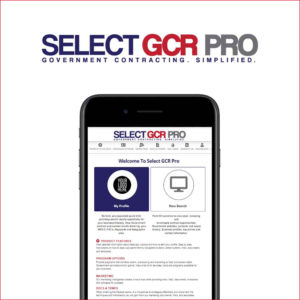Key components of an RFP may include:
- Introduction: Provides an overview of the organization, the project, and the purpose of the RFP.
- Project Overview: Describes the background, goals, and objectives of the project.
- Scope of Work: Defines the tasks, deliverables, and requirements of the project in detail.
- Proposal Submission Guidelines: Outlines the format, structure, and deadline for submitting proposals.
- Evaluation Criteria: Specifies the criteria against which proposals will be assessed and the weight assigned to each criterion.
- Budget Information: Provides details about the available budget and any specific financial considerations.
- Timeline: Presents the schedule, milestones, and deadlines related to the project and proposal submission.
- Terms and Conditions: Includes legal and procedural information, such as contract terms, intellectual property rights, and other relevant conditions.
Organizations use RFPs to ensure a fair and competitive bidding process, allowing them to select the most qualified and cost-effective vendor or service provider for a particular project. Vendors, in turn, use RFPs as a guide to understand the client’s requirements and to prepare comprehensive proposals that address those needs.
Who uses RFPs
RFPs are commonly used by a variety of organizations and entities across different sectors. The primary goal of issuing an RFP is to solicit competitive proposals from qualified vendors, service providers, or contractors. Here are some examples of entities that commonly use RFPs:
Government Agencies:
Government agencies use RFPs as a formalized method to procure goods, services, or projects. They issue RFPs to articulate specific needs, document project requirements, and ensure fair competition among potential vendors. The RFP outlines budgetary information, legal and regulatory compliance, and evaluation criteria.
Corporations:
Corporations utilize RFPs as a strategic tool for procurement and vendor selection. By issuing RFPs, companies can clearly define their project requirements, goals, and expectations, ensuring that potential vendors understand the scope of work.
Nonprofit Organizations:
Nonprofit organizations leverage RFPs for diverse purposes, such as soliciting services from consultants, securing technology solutions or software platforms, and identifying partners for program implementation or evaluation. RFPs are also employed for facility construction or renovation projects, collaborative initiatives, and training or capacity-building endeavors.
Educational Institutions:
Educational institutions may use RFPs to streamline the selection process when seeking external services or solutions. Whether looking for technology providers, construction firms for campus infrastructure projects, curriculum development experts, or other specialized services, an RFP helps define the institution’s needs, project scope, and evaluation criteria.
RFPs are a versatile tool used across industries and sectors to ensure a fair and competitive process for selecting vendors or service providers. They help organizations find the most qualified and capable partners to meet their specific needs.

When is an RFP used?
An RFP (Request for Proposal) is typically used in various situations where an organization needs to procure goods or services and wants to consider proposals from different vendors or service providers. Here are common scenarios when an RFP is used:
- Complex Projects: For projects that are complex, involve specialized skills, or require a multifaceted solution, organizations use RFPs to gather detailed proposals from potential vendors.
- Large Procurements: When an organization needs to make a significant purchase or enter into a long-term contract, such as buying equipment, software, or professional services, they often use an RFP to ensure a thorough and competitive selection process.
- Outsourcing Services: When outsourcing specific business functions or processes, companies use RFPs to identify qualified service providers and assess their capabilities, expertise, and proposed solutions.
- Government Contracts: Government agencies frequently use RFPs to solicit bids for projects, goods, or services. The process ensures transparency and allows for fair competition among vendors.
- Technology Implementations: In cases where organizations are looking to implement new technologies or systems, they may issue an RFP to find vendors with the expertise to meet their requirements.
- Construction Projects: Construction projects, whether for buildings or infrastructure, often involve multiple contractors and specialized skills. RFPs help in selecting the most suitable construction firms.
- Research and Development: In industries where innovation and research are crucial, RFPs may be used to find partners or organizations capable of contributing to research and development efforts.
- Professional Services: Businesses seeking professional services, such as legal, consulting, or marketing services, often use RFPs to evaluate different firms based on their expertise and proposed solutions.
- Renewable Energy Projects: Initiatives related to renewable energy, such as the construction of solar or wind farms, often involve RFPs to find qualified developers and contractors.
In essence, an RFP is used whenever an organization wants to elicit comprehensive proposals from potential suppliers or service providers, allowing them to make informed and strategic decisions based on a thorough evaluation of proposals received.
How is an RFP submitted?
Submitting an RFP (Request for Proposal) involves following the guidelines and instructions provided by the organization issuing the RFP. Here are general steps to submit an RFP:
1. Review the RFP Document:
Carefully read through the entire RFP document to understand the project requirements, scope, submission guidelines, and evaluation criteria.
2. Attend Pre-Submission Meetings or Q&A Sessions:
If the organization hosting the RFP conducts pre-submission meetings or question-and-answer sessions, make an effort to attend. This provides an opportunity to seek clarifications and gather additional information.
3. Prepare the Proposal:
Develop a comprehensive proposal that addresses all the requirements outlined in the RFP. Clearly articulate your approach, qualifications, capabilities, and any other information requested.
4. Follow Formatting Guidelines:
Adhere to the specified format and structure outlined in the RFP document. Ensure that your proposal is organized, easy to navigate, and includes all required sections.
5. Include Supporting Documentation:
Attach any necessary supporting documents, such as certifications, case studies, references, and financial information, as specified in the RFP.
6. Review and Revise:
Before submitting, thoroughly review your proposal to check for accuracy, completeness, and adherence to the RFP guidelines. Make any necessary revisions or corrections.
7. Contact Point for Questions:
If you have any last-minute questions or concerns, reach out to the designated contact person mentioned in the RFP document. Ensure that you address any uncertainties before the submission deadline.
8. Submit by the Deadline:
Submit your proposal by the deadline mentioned in the RFP. Late submissions are typically not accepted.
9. Submission Method:
Follow the specified method of submission. Some organizations may require electronic submissions through a designated portal or email, while others may prefer hard copies.
10. Confirmation of Receipt:
If applicable, inquire about or look for a confirmation of receipt to ensure that your proposal has been received by the organization.
It’s crucial to tailor your proposal to meet the specific needs outlined in the RFP and to demonstrate how your organization can successfully fulfill the requirements of the project. Following the submission guidelines diligently increases the chances of your proposal being considered during the evaluation process.






